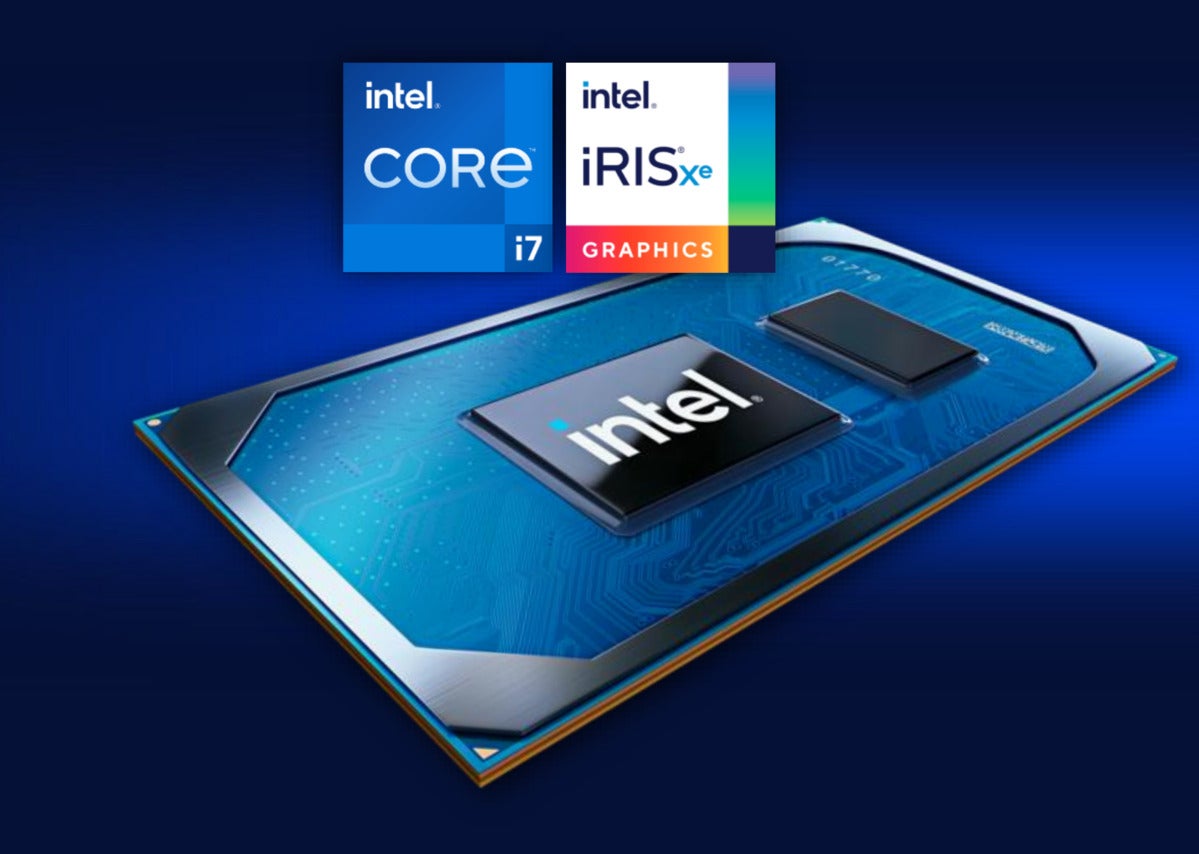An 11th-gen Core Tiger Lake CPU and an Iris Xe Max GPU could be a spec to look for in future laptops.
Intel
Today’s Best Tech Deals
Picked by PCWorld’s Editors
Top Deals On Great Products
Picked by Techconnect’s Editors
Intel claimed Saturday that its new Iris Xe Max graphics can outperform Nvidia’s GeForce MX350 in gaming, and even top a GeForce RTX 2080 in some encoding tasks. How it does that—through power sharing, and an Intel technology called Deep Link—could make the package of an 11th-gen Core Tiger Lake CPU and an Iris Xe Max GPU a spec to look for in future laptops.
Code-named DG1, Intel’s first discrete GPU since 1998’s Intel i740 will appear in mainstream thin-and-light PCs like the Acer Swift 3x, Asus VivoBook Flip TP470, and Dell Inspiron 15 7000 2-in-1. The Iris Xe Max faces off against Nvidia’s GeForce MX350 and MX450, both discrete mobile GPUs that split the difference between a gaming-class mobile GPU and the integrated graphics included in mobile Ryzen and Core processors.
Intel’s targeting the Iris Xe Max at what it calls “mobile creators,” and it’s not hard to see why: The company’s data showed the Tiger Lake-Iris Xe LP combo slightly topping an Ice Lake-GeForce MX350 notebook, though the advantages are slight. Frame rates don’t really climb above 45 frames per second, either. In encoding tasks the gap is more profound: 20 percent to 40 percent, and vastly more in some cases.
Intel’s technical strategy raises its own interesting prospects for future laptops. The company’s pairing of a CPU and discrete GPU began with the short-lived Kaby Lake-G, and the company says it has adapted what it learned there into the Iris Xe Max. The Iris Xe Max takes the integrated graphics already built into Tiger Lake, separates it out into a discrete component, and lets the two work together, facilitated by Deep Link. It’s almost like two of the same GPUs working together in concert…but not quite.
How fast is Intel’s Iris Xe Max graphics?
Darren McPhee, director of discrete graphics marketing at Intel, calls the Xe-LP GPU inside of Tiger Lake and the Iris Xe Max, “fraternal twins,” in terms of the IP and the specs that they share. The Iris Xe Max provides a faster clock speed, plus an odd choice of memory: LPDDR4x.
First, the numbers. Intel’s original Tiger Lake product matrix listed the graphics frequency, which we’ve highlighted in the graphic below. The Iris Xe Max GPU is a version of the Tiger Lake-LP GPU, but running at a faster 1.65GHz. There are 96 EUs inside the Iris Xe Max, too. The similarities between the Tiger Lake GPU carry over to the memory: Instead of the GDDR memory you might expect, the Iris Xe Max addresses just 4GB of LPDDR4x memory, the same memory type as Tiger Lake.
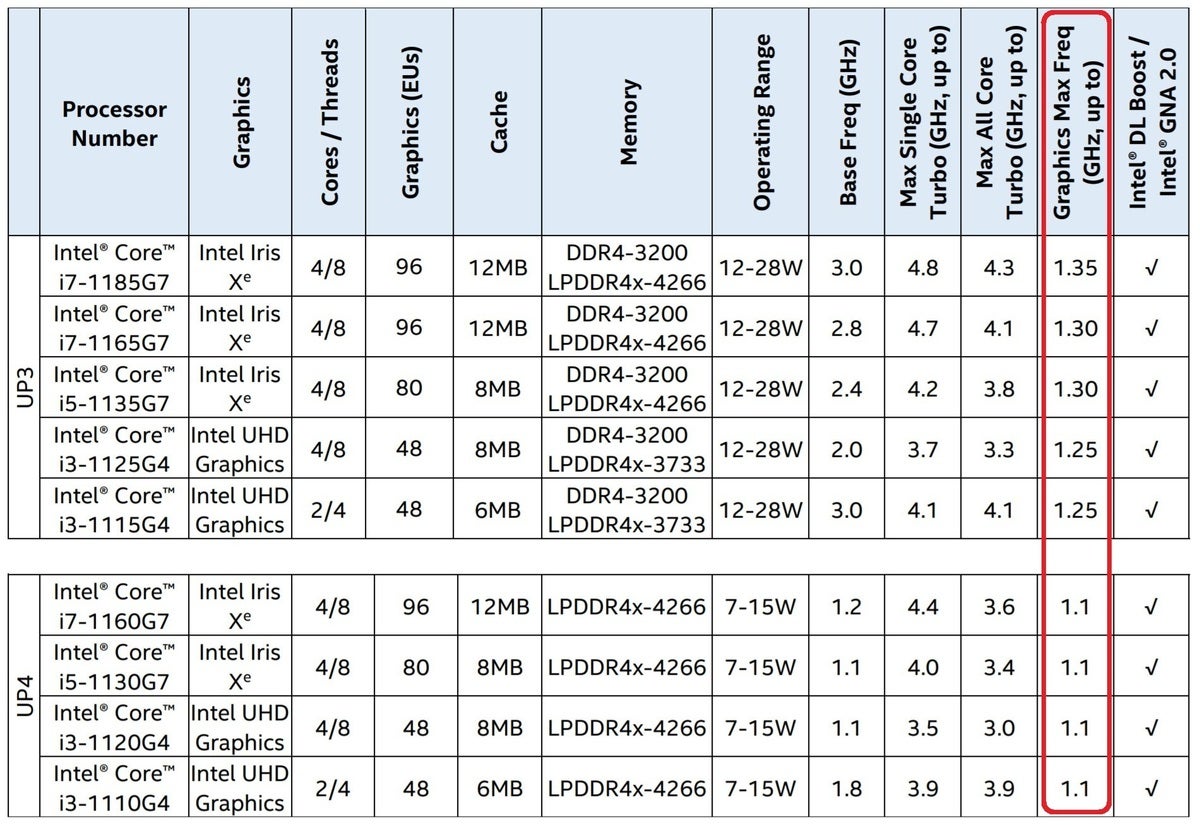 Intel
IntelWhile the Intel Iris Xe Max gets to its higher frequencies using different libraries than Tiger Lake, “there are a lot of similarities to Tiger Lake,” according to Josh Moss, a member of the graphics product marketing team for Intel’s Client Computing Group.
Here are the full technical specifications for the Iris Xe Max. Note that it shares other common features with the Tiger Lake family: PCI Express 4.0, for one, as well as the ability to connect to up to four displays, with up to 8K support over DisplayPort.
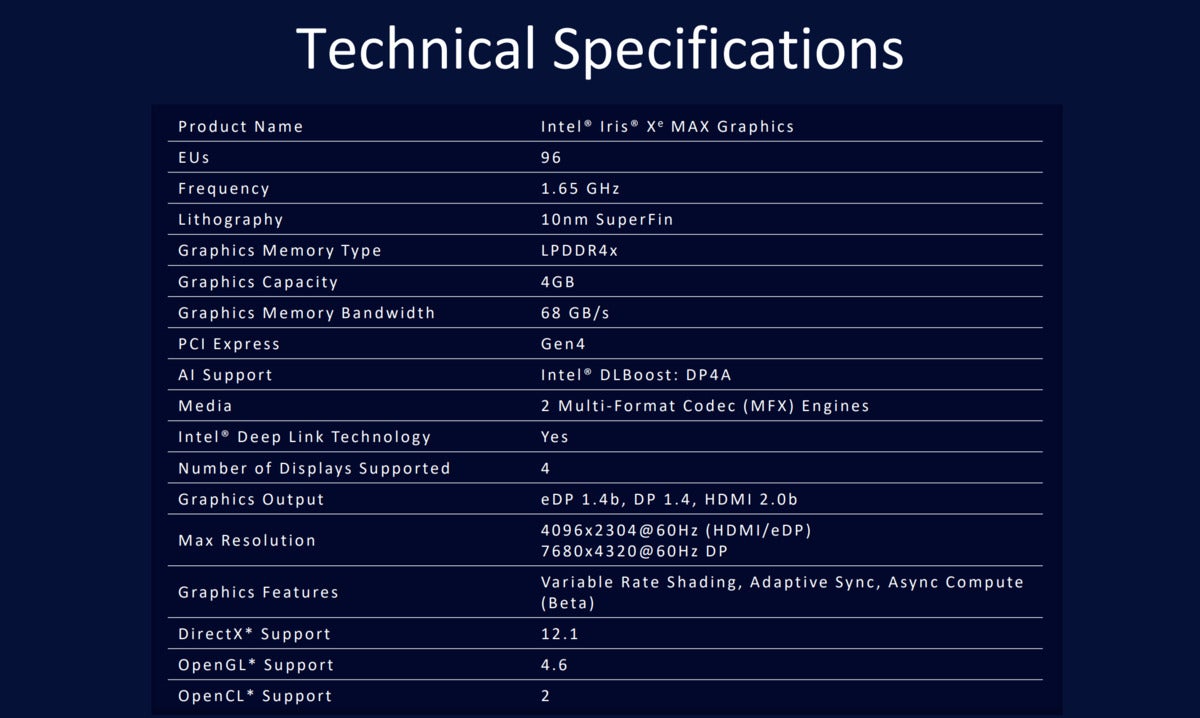 Intel
IntelIntel also published some of its early, unconfirmed data about well the Iris Xe Max will compete with Nvidia’s GeForce MX series in gaming.
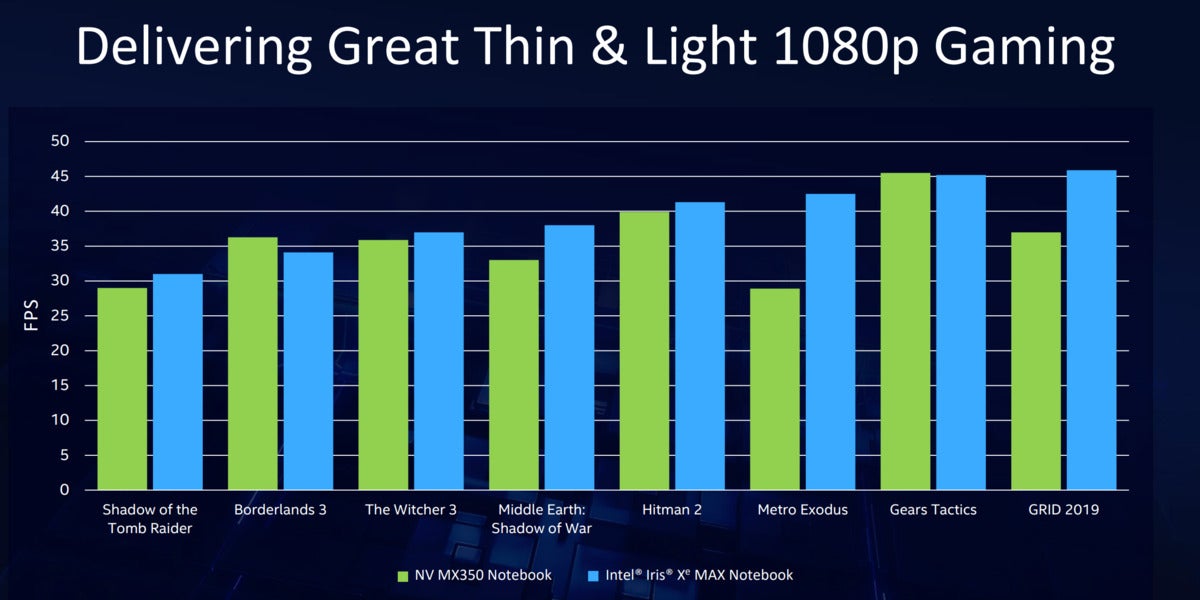 Intel
IntelIntel Iris Xe Max (Acer Swift 3x with Core i7-1165G7/Iris Xe Max) is the blue bar above, vs. Nvidia’s GeForce MX350 (running alongside a Core i7-1065G7), the green bar above.
Intel confirmed that, beginning in 2021, it will begin shipping DG2, the code name for the “Xe HPG” product designed for gaming PCs. There’s an unexpected addition: Intel said Saturday that it will be bringing the less powerful Xe LP graphics found within Tiger Lake to value desktop PCs in the first half of 2021, as a discrete graphics solution.
How Iris Xe Max shares power between the CPU and GPU
The message behind the Iris Xe Max is simple: Buy a notebook with an Intel Tiger Lake CPU and a discrete Iris Xe Max GPU chip, and you’ll receive more than the sum of its parts. Intel takes advantage of these two nearly identical pieces of silicon sitting alongside one another, and ties them together through a common software framework, Moss said. (Physically, one connects to the other via a x4 PCI Express 4.0 link, according to a company representative.)
First, however, it took a lesson from the unusual fusion of an AMD GPU and Intel CPU to create the Kaby Lake-G chip. Gaming laptops can run both the GPU and CPU at full power. Intel’s Dynamic Tuning shuttled power back and forth between the CPU and GPU to maintain an overall thermal budget. Now, it’s brought that technique to Iris Xe Max graphics.
With a knowledge of what workload is being run, what’s happening at the system and OS level, with temperatures and thermal headroom, “we can make decisions about how much power to give to each,” Moss said. The driver software adjusts the power levels (PLs) on each in real time, based on thermal measurements, utilization, and more. “So if it’s a CPU-centric workload and the GPU’s not running, we can bias the power over to the CPU, and for a GPU, we can obviously bias the power over to the GPU.”
 Intel
IntelIntel provided its own estimates for how power sharing would benefit overall performance.
We’ve seen this before with Intel’s competitors, specifically the intriguing SmartShift technology that AMD debuted earlier this year. Unfortunately, conservative planning by PC makers confined the technology to a single Dell notebook, the Dell G5 15 SE.
Intel’s Deep Link works in a similar manner. Here, Intel’s software framework is aware that there’s an Iris Xe Max alongside the Tiger Lake CPU. It leverages the combined AI (VNNI and DP4a) and the multiple media encoders on each piece of silicon to put them all to work at the same time.
 Intel
IntelIntel’s Tiger Lake and its Iris Xe Max GPUs have common functions that can work in concert via Deep Link.
This can play out in several ways. In one demonstration, for example, Intel used the Topaz Labs’ Gigapixel upscaler algorithm to add detail to a 1.4MP image, upscaling it to the equivalent of 23MP. Intel pitted a 10th-gen Ice Lake/GeForce MX350 notebook using TensorFlow vs.a Tiger Lake/Iris Xe Max system and found that its system finished seven times faster, upscaling multiple photos. (Intel executives said they didn’t have a GeForce MX450 system to test.) In a second test, Intel compared a Core i9-10980K system with a RTX2080 GPU with a Core i7-1165G7 and Iris Xe Max graphics in transcoding 10 one-minute clips from 4K/60 AVC to 1080p/60 HEVC using Handbrake. Intel finished 1.78 times faster.
Intel laid out a list of applications that can take advantage of this behavior: HandBrake, Open Broadcaster Software (OBS), Topaz Gigapixel AI, xSplit, Huya, Joyy, Leela Chess 0 (Lc0), and Xiaohulu. Blender, CyberLink, Fluendo, and Magix Software will arrive soon, Moss said.
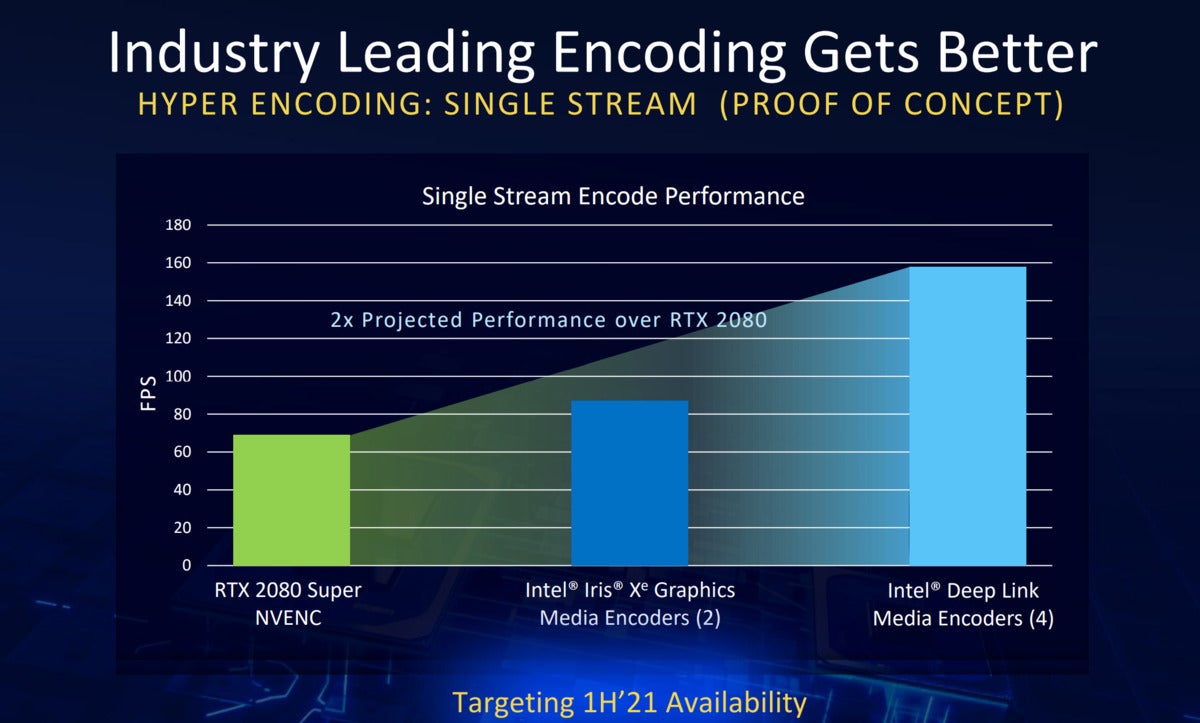 Intel
IntelMoss also said that Intel hopes to ship a proof of concept during the first half of 2021 for single-stream encoding. That will depend on finalizing the implementation, then sending it to FFMPEG, the engine that HandBrake runs, according to an Intel representative.
One interesting disclosure that Intel made was admitting that there will be some applications and games that do not run better on a combined Tiger Lake/Iris Xe Max system, and will see increased frame rates on the Tiger Lake processor with its own integrated GPU. (A large part of this involves the latencies of going back and forth between the two GPUs.) In this case, Moss said, the system is smart enough to confine the graphics workload to whichever GPU is the most appropriate.
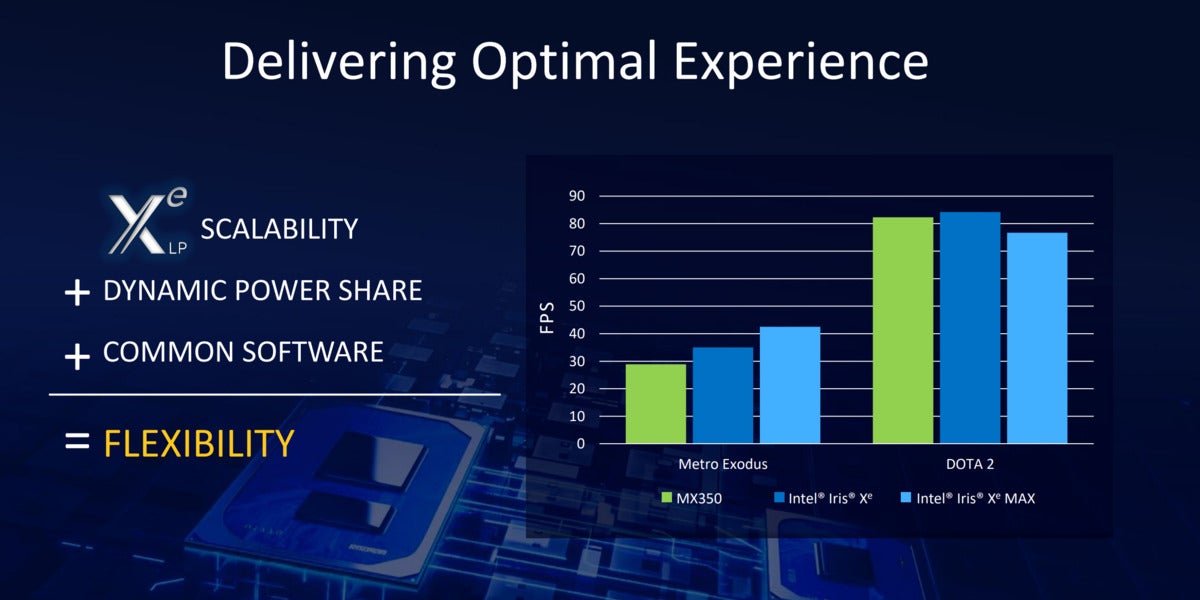 Intel
IntelIn cases where Intel’s Deep Link-connected GPUs won’t benefit gamers, Intel says that its drivers will be smart enough to adjust.
Based on Intel’s ongoing improvements, you might think that all this is a work in progress. Intel seems to feel that way, too. McPhee called the Iris Xe Max a “very strategically created part” that allows Intel to develop the internal software that will allow Intel to enter the discrete graphics market—not with the Iris Xe Max (DG1), but the DG2. It seems very likely that Intel will be marketing its upcoming Xe-HPG part as a package deal, taking advantage of the combination of the CPU and GPU to inflate its performance numbers relative to the competition. How will it all play out? We have about a year to find out.
Note: When you purchase something after clicking links in our articles, we may earn a small commission. Read our affiliate link policy for more details.
As PCWorld’s senior editor, Mark focuses on Microsoft news and chip technology, among other beats.


